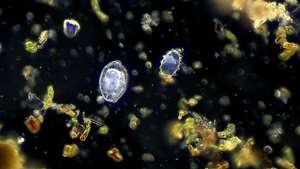
The Chemistry of Soap and Detergents
In our daily lives, soap and detergents play a crucial role in keeping our surroundings clean and our clothes fresh. While these products may seem simple, their effectiveness stems from the intricate chemistry behind their composition. In this exploration of the chemistry of soap and detergents, we will uncover the science that makes these cleaning agents essential for maintaining hygiene and cleanliness.

The Basics: What is Soap?
Soap is a classic cleaning agent that has been used for centuries. Its fundamental chemistry involves the combination of fats or oils with an alkaline substance, typically sodium hydroxide (lye) in a process known as saponification. This chemical reaction results in the formation of soap molecules, which possess both hydrophobic (water-repelling) and hydrophilic (water-attracting) properties.
The Structure of Soap Molecules
Soap molecules are amphiphilic, meaning they have both hydrophobic and hydrophilic regions. The hydrophobic tail, derived from the fatty acid component, avoids water and is attracted to oils and grease. On the other hand, the hydrophilic head is attracted to water. This dual nature allows soap molecules to surround and emulsify oily substances, breaking them down into smaller droplets that can be easily rinsed away.
How Soap Cleans
When soap is applied to a greasy surface, the hydrophobic tails of the soap molecules embed themselves into the grease, while the hydrophilic heads point outward, forming a spherical structure called a micelle. These micelles surround the grease particles, suspending them in water. As a result, the grease is effectively lifted off the surface and dispersed in the water, allowing it to be washed away.
Hard Water and Soap
While soap is an effective cleaner, its performance can be affected by the presence of hard water, which contains high levels of calcium and magnesium ions. In hard water, these ions can form insoluble salts with soap, reducing its lathering ability and effectiveness. This led to the development of synthetic detergents as an alternative to soap in hard water conditions.

The Rise of Detergents
Detergents, often referred to as synthetic detergents, were introduced in the early 20th century as a response to the limitations of soap in hard water. Unlike soap, detergents are synthetic compounds with a hydrophobic tail and a hydrophilic head, similar to soap molecules. However, the structure of detergents can be tailored to overcome the challenges posed by hard water.
Types of Detergents
1. Anionic Detergents:
Anionic detergents have a negatively charged hydrophilic head. They are effective at cleaning in hard water and are commonly used in laundry detergents.
2. Cationic Detergents:
Cationic detergents have a positively charged hydrophilic head. They are often used in fabric softeners and certain types of disinfectants.
3. Nonionic Detergents:
Nonionic detergents have an uncharged hydrophilic head, making them less affected by hard water. These detergents are commonly found in dishwashing detergents and certain laundry products.
4. Amphiphilic Detergents:
Amphiphilic detergents have both hydrophobic and hydrophilic regions, similar to soap. They are versatile and find applications in various cleaning products.
Environmental Impact
While soaps and detergents are essential for maintaining cleanliness, their use has environmental implications. Phosphates, once commonly used in detergents, were found to contribute to water pollution and eutrophication. In response, many countries have banned or limited the use of phosphates in household cleaning products.
Modern detergent formulations prioritize biodegradability and reduced environmental impact. Additionally, the advent of high-efficiency (HE) detergents and front-loading washing machines has led to more efficient use of water and detergents, further minimizing environmental consequences.
Mystery Unveiled!
The chemistry of soap and detergents unveils the science that underlies our everyday cleanliness. From the ancient art of soap-making to the sophisticated formulations of modern detergents, these cleaning agents have come a long way. As we continue to develop new technologies and environmentally friendly formulations, the chemistry of soap and detergents remains a dynamic field, ensuring that our quest for cleanliness aligns with sustainable practices for the health of both our homes and the planet.




